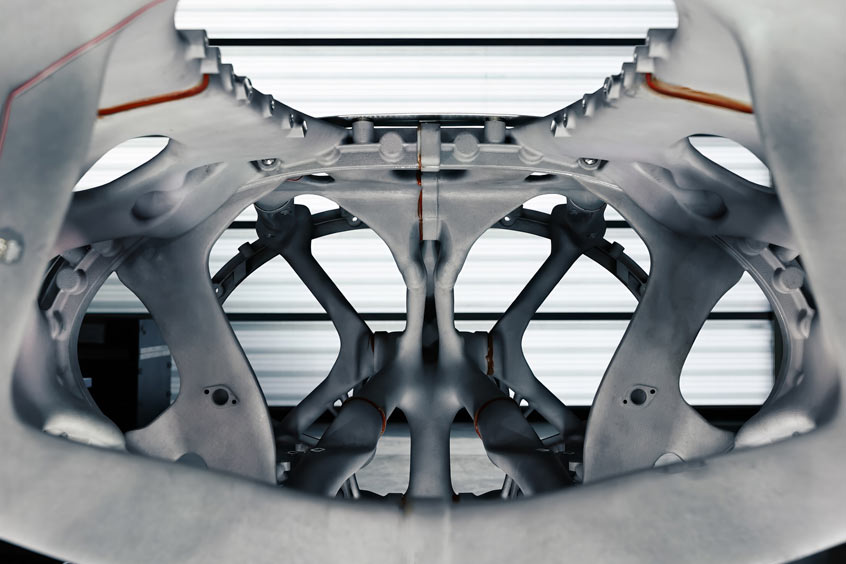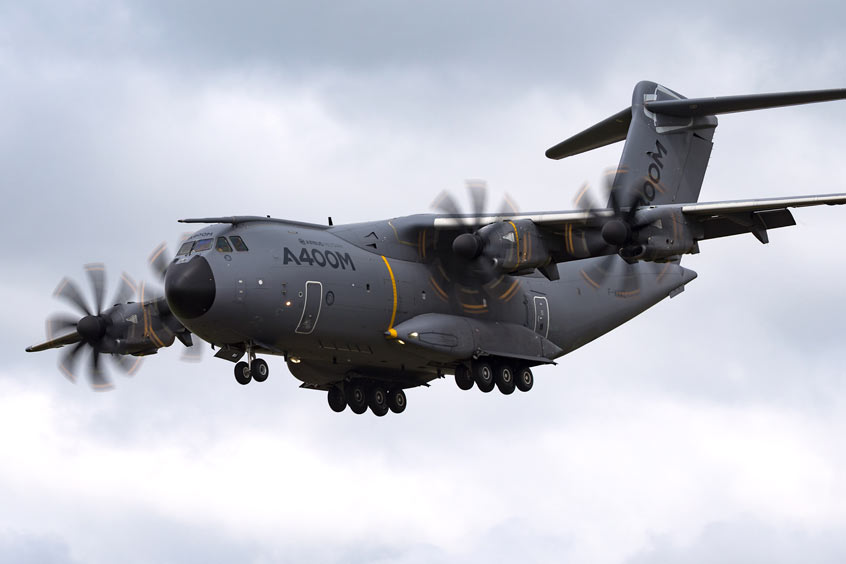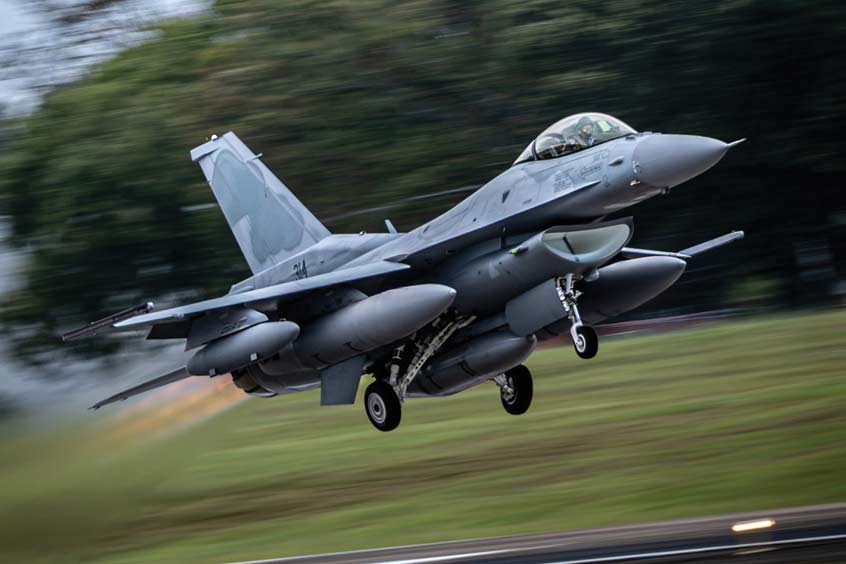PRESS RELEASE
Issued by: Rolls-Royce plc Defence Aerospace
An independent report produced by professional services firm, PwC, has confirmed the economic impact of the Tempest programme will be felt in every region of the UK, supporting an average of 21,000 jobs a year, with 70% of the programme's value generated in the North West, South West and East of England.
The Tempest programme is expected to generate long-term high value employment, with productivity per worker 78% higher than the national average, underlining how this exciting programme can make a significant contribution to the UK Government's levelling up priorities and the wider economy.
The programme is being delivered by Team Tempest – combining the expertise of the UK Ministry of Defence (MOD), BAE Systems, Leonardo UK, MBDA UK and Rolls-Royce. Working with international partners, the team is leading progress towards a UK-led internationally collaborative Future Combat Air System which will ensure the Royal Air Force and its allies retain world-leading, independent military capability.
Key to the success of Tempest is delivering this highly-advanced capability more rapidly and more cost effectively than ever before.
Investment by industry and MOD in research and development for Tempest will generate positive spill-over benefits for the wider economy through applications of new technologies in other sectors and driving innovation in collaboration with hundreds of companies, SMEs and academic organisations.
The PwC report confirmed the expected impact of the Tempest programme will:
- Make an estimated £26.2bn contribution to the UK economy between 2021 and 2050*;
- Support on average 21,000 jobs per year, from development to operational service (2026-2050);
- Create high productivity employment with an average GVA per worker of £101,000, 78% higher than the UK national average and 42% higher than the country's manufacturing average;
- Support significant benefits across regional economies.
North West
- The programme is expected to generate at least £7.9bn GVA**;
- Will support on average 5,000 highly skilled jobs per year directly employed on the programme and in the first tier of the supply chain**;
- Productivity 31% higher than the North West manufacturing average.
South West
- The programme is expected to generate at least £2.7bn GVA **;
- Will support on average 2,000 highly skilled jobs per year directly employed on the programme and in the first tier of the supply chain**
- Productivity 24% higher than the South West manufacturing average.
East of England
- The programme is expected to generate at least £1bn GVA **;
- Will support on average 750 jobs highly skilled jobs per year directly employed on the programme and in the first tier of the supply chain**;
- Productivity 60% higher than the East of England manufacturing average.
Diane Shaw, EMEA Aerospace, Defence and Security Consulting Leader, PwC, commented, "As our research outlines, the scale of the Tempest programme is significant and expected to deliver wide-ranging benefits to the UK, stimulating investment in new technologies and promoting critical skills and capabilities that ensure the UK can continue to operate at the forefront of world-leading technology. The programme will stimulate R&D in regions most in need and generate wider economic benefits for these areas, supporting the UK Government's levelling up priorities and contributing to the UK's economic recovery and prosperity in the decades ahead."
UK Defence Minister Jeremy Quin added, "By investing in the R&D to support this national endeavour to create the Future Combat Air System (FCAS) alongside our partners, we are turbocharging our combat air industry. Situated at the heart of the country's aerospace sector, investment in FCAS reaffirms the Government's commitment to spend more than £2bn over the next four years, with additional investment from industry, to create military capabilities that will keep us and our allies safe whilst creating thousands of skilled jobs right across the UK."
The Team Tempest partners are working collaboratively with UK industry, embracing an agile approach, adopting new digital working practices to deliver technologically advanced capabilities and processes that drive efficiency and increase productivity. The partners are already engaged with more than 600 suppliers, SMEs and academic institutions across the UK, helping to deliver benefit beyond the defence sector.
ADS Chief Executive, Kevin Craven, said: "The Tempest programme will bring tens of thousands of skilled jobs that will provide rewarding careers, help to level up the UK economy, and build the advanced capabilities of our world-leading combat air industry. The contribution of SMEs will be vital to Tempest's success and I hope our network of innovative supply chain companies will explore the opportunities to be involved in the programme and maximise the benefits to our sector and our national prosperity."
The Tempest programme is already a magnet to attract engineers and technicians and a place for young people to build their long-term careers. There are currently more than 2,000 people employed across UK industry and the MOD on the programme.
Combat Air activities of the four Team Tempest partners are expected as a whole to contribute £100.1bn to the UK economy and support 62,000 jobs per year between 2021 and 2050. Tempest makes up an increasing share of the partners' UK Combat Air activities and that of their supply chains, rising from around 12% today to nearly 50% of economic contribution by 2050 and is a crucial element of the aerospace and defence industry's ongoing prosperity.
* Figures in text presented in NPV (net present value) terms in 2019 price basis. Gross Value Added (GVA): A measure of the value of goods and services produced in an area, industry or sector of an economy. Net present value (NPV): Used to compare estimates of costs and benefits occurring at different points in time, taking into account society's time preference for incurring costs and benefits. All figures exclude benefits beyond 2050, which means most of the value generated by exports is not captured within this 30-year period.
**Example regional data shown is an average per annum of Direct and Tier 1 spending only (2021-2050). Employment and GVA generated in the supply chain beyond tier 1 is real and significant but has not been calculated regionally. The data shown does not include induced effects and potentially significant impact from R&D spill-over effects.
| Contact details from our directory: | |
| Rolls-Royce plc Defence Aerospace | Turbofan Engines, Turbojet Engines, Engine Parts, Starter Generators, Turbine Engine Blades, Carbon-reinforced Composites |
| BAE Systems plc | Airframer |
| Leonardo | Sensors/Transducers, Engineering Design Services, Reconnaissance Radar, Surveillance/Air Defense Radar |
| MBDA UK | Missiles, Weapons Countermeasures, Warning Systems/Equipment |
| Related aircraft programs: |
| BAE Tempest |
Weekly news by email:
See the latest Bulletin, and sign up free‑of‑charge for future editions.

Saab advances digital manufacturing with autonomous fuselage

Airbus deploys Stratasys printed parts for A320, A350 and A400M

Electra kicks off Part 23 application for hybrid-electric EL9
